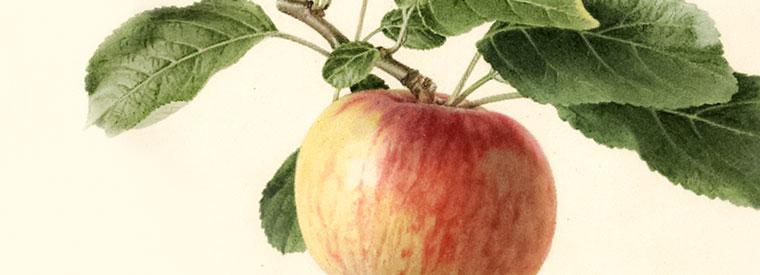Stay me with flagons; comfort me with apples.

Fruit
ROME BEAUTY has the synonyms Rome, Starbuck, Roman Beauty, and Gillett's Seedling, and is speculated to be a seedling of Westfield Seek-No-Further. It was recorded in 1848. Joel Gillett in Proctorville, Ohio, bought a number of grafted trees from Putnam Nursery in 1816. One had sprouted below the graft and Gillett gave this tree to his son. It produced large attractive apples that he named Rome, for the township. The original tree was washed away in a flood in 1860. There is a sport called Rome Beauty Double Red, a tetraploid, flatter and of higher color than the original. Medium to large in size and uniformly round in shape and fairly smooth and well-colored, the greenish-yellow skin is mottled and flushed with bright-red, which deepens to a solid-red on the sun-exposed side. It is conspicuously striped bright carmine. There are many strains and cultivars that vary in coloration. The creamy-yellow flesh is coarse-textured and juicy, and the skin is tough. The stalk is long and thick and usually projects at an angle. The tree growth is narrow and upright and the bark is a reddish-olive in color. Leaves are small, shiny, light-green, oval and sharply serrated. Its limbs are unusually supple and are therefore less often damaged by high winds. Rome Beauty is self-fruitful and blooms late, escaping late frosts. An all-purpose apple; it is considered one of the best varieties for baking. It stores well and ripens in early October.
Ripening Period
- Mid Fall - October


